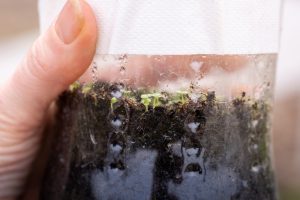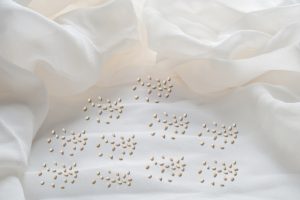Have you ever planted seeds with excitement, only to be met with disappointing results? Some seeds seem stubbornly resistant to germination, leaving you wondering what went wrong. Well, for many plants native to regions with cold winters, the answer might lie in a process called cold stratification.
This guide will unveil the fascinating world of cold stratification and explain why it’s a vital step for some plants to germinate and flourish.
What is cold stratification?
It is a technique that mimics the natural winter conditions experienced by seeds in their native habitats. It involves exposing seeds to a period of cold and moist conditions to simulate a winter freeze. This chilling period plays a crucial role in breaking seed dormancy, the physiological state where seeds are temporarily prevented from germinating.
Why do seeds need a cold period?
Imagine a plant that drops its seeds in late summer or fall. If those seeds germinated right away, the tiny seedlings would face the harsh winter completely unprepared. Cold stratification acts as a natural survival mechanism. The cold temperatures signal to the seed that it’s not the right time to sprout.
- Breaking dormancy: Many seeds have a tough outer coat, like a miniature suit of armour, that prevents them from germinating prematurely. Cold temperatures help break down this seed coat, making it easier for the embryo inside to sprout when spring arrives. Here’s a metaphor to illustrate this concept: imagine the cold as a key that unlocks the seed coat, allowing the embryo to emerge.
- Environmental cues: It also mimics the natural changes in the environment that occur during winter. These changes, such as increased moisture levels, can trigger hormonal changes within the seed, preparing it for optimal germination when spring arrives. Think of this process as the seed receiving a signal from the environment that it’s safe to germinate because warmer temperatures and more rain are on the way.
Which plants benefit from cold stratification?
Cold stratification is particularly important for plants that originate from regions with cold winters. These plants include:
- Wildflowers: Many native Australian wildflowers, like flannel flowers and kangaroo paws, require cold stratification for successful germination.
- Perennials: Popular perennials like lavender, lupins, and foxgloves often benefit.
- Shrubs: Certain shrubs, such as lilacs, viburnums, and rhododendrons, may have improved germination rates with cold stratification.
- Trees: Some trees, including oak, maple, and cherry, can benefit from overcoming seed dormancy.
How can you cold stratify seeds?
The good news is that cold stratification can be easily replicated at home. Here are two common methods:
Using a refrigerator:
- Gather your materials: You’ll need a container with drainage holes, a moistened growing medium like damp sand or vermiculite, and plastic wrap.
- Prepare the seeds: Moisten the seeds slightly but ensure they’re not waterlogged. Mix them with the damp growing medium.
- Fill the container: Place the seed mixture in the container, leaving some space at the top. Cover it loosely with plastic wrap to retain moisture.
- Chill the seeds: Place the container in the crisper drawer of your refrigerator for the recommended duration (refer to seed packet instructions – it can range from a few weeks to several months).
- Monitor the seeds: Check the seeds periodically to ensure the growing medium stays moist. If it dries out, mist it with water.
Sowing seeds outdoors in the fall:
- Timing is key: This method works best if you live in a region with mild winters. Sow the seeds directly in pots or garden beds in late fall or early winter.
- Mimic winter conditions: Lightly cover the sown seeds with a layer of mulch (like straw or leaves) to insulate them during the coldest months.
- Spring awakening: With the arrival of spring and warmer temperatures, the seeds will naturally experience the cold stratification needed for germination.
When should you cold stratify seeds?
The ideal timing for cold stratification depends on the specific plant and your local climate. Seed packets typically provide information on the recommended chilling period. Generally, it’s best to start stratifying seeds a few weeks to several months before the typical last frost date in your area.
What happens if you skip cold stratification?
While cold stratification might seem like an extra step, it plays a vital role for certain seeds. Skipping this process can lead to some frustrating outcomes in your garden:
- Sleepy seeds: Without the cold cue to kickstart growth, the seeds might remain dormant and simply refuse to sprout at all. This can leave you with disappointing empty pots or sparse seedbeds.
- Weaklings from the start: Even if some seeds do manage to germinate without cold stratification, the resulting seedlings are often weak and spindly. They might struggle to survive, grow slower than their cold-treated counterparts, and be more susceptible to disease.
- Delayed gratification (not the good kind): In some cases, skipping this method might not completely prevent germination. But the process is simply delayed. The seeds might wait until they experience a natural cold period, like winter outdoors, before finally deciding to sprout. This can throw off your planting schedule and leave you waiting longer for those beautiful blooms.
Conclusion
Understanding cold stratification can be the key to unlocking successful seed germination for a variety of plants. By mimicking the natural winter freeze, you can give your seeds the chilling period they need to break dormancy and emerge strong and healthy in spring. So, the next time you’re looking to grow plants from seed, consider the magic of cold stratification – it might just be the missing piece for a thriving garden.
Looking for expert advice on seed selection, planting techniques, or garden maintenance? Look no further than A1 Gardening & Landscaping Sydney Sydney! Our friendly team is passionate about helping you cultivate a thriving oasis.
We have a wide range of high-quality seeds at competitive prices, perfect for all your gardening needs. Let A1 Gardening & Landscaping Sydney Sydney help you unlock the wonder of the plant world. Visit our website or call us today for a free consultation!



